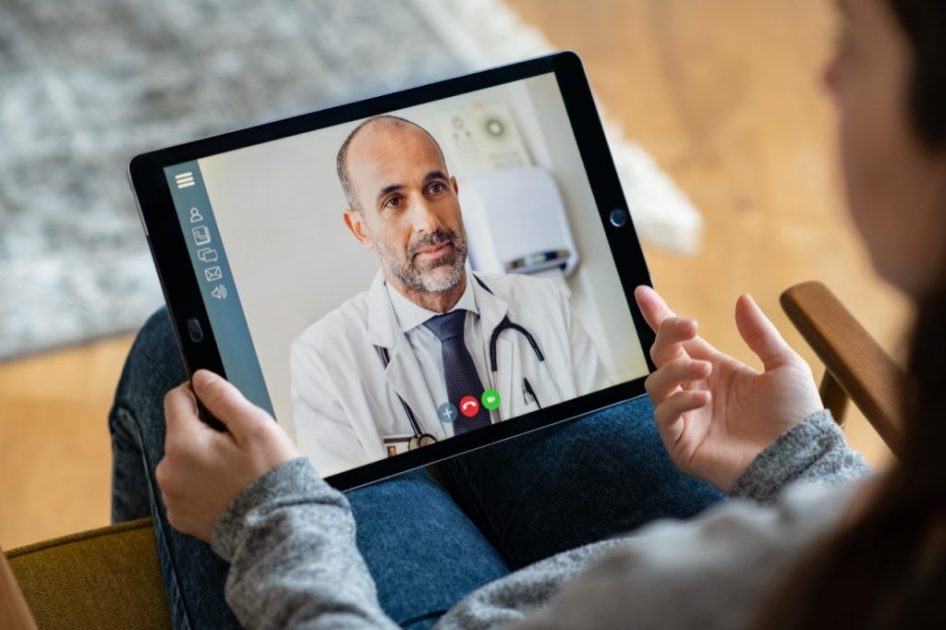The Digital Doctor: Transforming Healthcare Through Telemedicine

In an increasingly digital world, the way healthcare is delivered is undergoing a revolutionary shift. Telemedicine, powered by doctor on online, is at the forefront of this transformation, offering patients unprecedented access to medical care anytime, anywhere. This blog explores the evolution of telemedicine, its impact on healthcare delivery, benefits for patients and providers, challenges faced, and its potential to reshape the future of healthcare.
The Evolution of Telemedicine
Telemedicine, the practice of providing healthcare services remotely using telecommunications technology, has evolved significantly over the past decade. Initially developed to reach patients in remote or underserved areas, telemedicine now encompasses a wide range of medical services delivered via video calls, phone consultations, secure messaging platforms, and mobile apps. This evolution has been driven by advances in digital technology, improved internet connectivity, and the growing acceptance of virtual healthcare solutions by patients and healthcare providers.
Benefits of Telemedicine for Patients
- Accessibility: Telemedicine enhances access to healthcare services, particularly for patients in rural or remote areas where access to traditional healthcare facilities may be limited. Patients can consult with healthcare providers and specialists without geographical constraints, improving healthcare access and equity.
- Convenience: Virtual consultations offer unparalleled convenience. Patients can schedule appointments at their convenience, reducing travel time, waiting times, and the need for taking time off work or arranging childcare. This flexibility is especially beneficial for patients with mobility issues or chronic illnesses.
- Cost-Effectiveness: Telemedicine reduces healthcare costs for both patients and providers. Patients save on travel expenses, parking fees, and other incidental costs associated with in-person visits. Healthcare facilities benefit from reduced administrative overhead and improved resource allocation.
- Timely Care: doctor on online facilitate prompt medical consultations and interventions, leading to faster diagnosis, treatment initiation, and management of health conditions. This timely access to care improves health outcomes and patient satisfaction.
- Continuity of Care: For patients with chronic conditions or ongoing medical needs, telemedicine ensures continuity of care through regular follow-up consultations, medication management, and remote monitoring. This personalized approach promotes patient engagement and adherence to treatment plans.
Benefits of Telemedicine for Healthcare Providers
- Expanded Reach: Telemedicine enables healthcare providers to extend their reach beyond traditional practice boundaries. Providers can offer consultations and second opinions to patients in different geographic regions, enhancing access to specialized care and expertise.
- Operational Efficiency: Virtual consultations streamline administrative processes and optimize healthcare delivery. Providers can manage appointments more efficiently, reduce wait times, and allocate resources effectively, improving practice efficiency and patient throughput.
- Enhanced Collaboration: Telemedicine fosters collaboration among healthcare professionals, enabling multidisciplinary care teams to consult on patient cases and share expertise seamlessly. This collaborative approach enhances care coordination and patient outcomes.
- Patient-Centered Care: Online doctors support patient-centered care models by offering personalized healthcare services tailored to individual patient needs and preferences. Providers can engage patients in shared decision-making, empower them to manage their health, and promote proactive health behaviors.
Challenges and Considerations
While telemedicine offers numerous benefits, several challenges and considerations must be addressed for its widespread adoption and sustainability:
- Technological Infrastructure: Access to reliable internet connectivity and digital devices is essential for participating in telemedicine consultations. Efforts to improve infrastructure and bridge the digital divide are necessary to ensure equitable access to telemedicine services globally.
- Regulatory and Legal Compliance: Telemedicine regulations vary across jurisdictions, impacting licensure, reimbursement, and privacy standards. Harmonizing regulatory frameworks and addressing legal considerations are crucial to support the expansion of telemedicine while safeguarding patient rights and ensuring quality care.
- Data Privacy and Security: Protecting patient confidentiality and securing sensitive health information are paramount in telemedicine. Telemedicine platforms must comply with stringent data protection regulations and implement robust cybersecurity measures to mitigate risks of data breaches or unauthorized access.
- Clinical Limitations: Virtual consultations have limitations for certain medical conditions and procedures that require physical examination or in-person care. Healthcare providers must establish protocols for determining when in-person visits are necessary to ensure comprehensive patient care.
- Healthcare Provider Training and Education: Education and training on telemedicine platforms, technologies, and best practices are essential for healthcare providers to deliver safe, effective, and high-quality telemedicine services. Enhancing digital health literacy among providers promotes confidence in using telemedicine tools and ensures optimal patient care.
The Future of Telemedicine
Looking ahead, telemedicine holds tremendous potential to further transform healthcare delivery and improve patient outcomes:
- Integration with Digital Health Technologies: Telemedicine platforms will integrate with wearable devices, remote monitoring tools, and health apps to capture real-time health data and enhance clinical decision-making.
- Advancements in Artificial Intelligence: AI-driven algorithms will support healthcare providers in analyzing patient data, diagnosing conditions, and personalizing treatment plans during virtual consultations.
- Expansion of Specialty Care: Telemedicine will expand into specialized medical fields, including mental health, dermatology, oncology, and chronic disease management. It will enhance access to specialized expertise, improve care coordination, and reduce healthcare disparities.
- Global Healthcare Collaboration: Telemedicine facilitates cross-border collaborations and enables healthcare providers to share knowledge, expertise, and resources globally. It promotes medical research, enhances healthcare delivery in underserved regions, and addresses global healthcare challenges.
Conclusion
Telemedicine and online doctors are revolutionizing healthcare delivery by providing accessible, convenient, and patient-centered healthcare solutions. While challenges such as technological infrastructure, regulatory compliance, and data security require attention, ongoing advancements in telemedicine technology and policy frameworks are paving the way for a more interconnected and efficient healthcare future. By embracing telemedicine, healthcare systems worldwide can achieve greater accessibility, efficiency, and patient satisfaction, ensuring that quality healthcare is accessible to all, anytime and anywhere.




